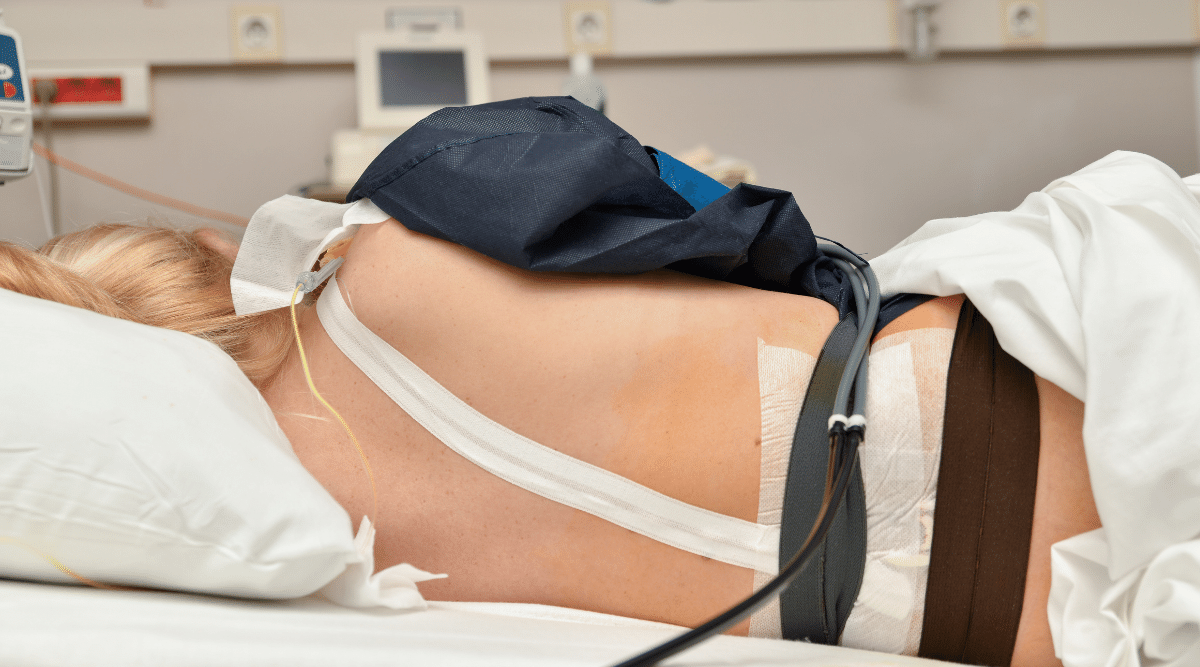An epidural anaesthetic is performed by a specialist doctor known as an anaesthetist. As revealed, epidural anaesthetic is where an injection of local anaesthetic (sometimes mixed with an opiate such as pethidine or fentanyl) is given into the epidural space (an area located around the spinal cord). Evidently, an epidural anaesthetic is given to relieve pain in labour It helps reduce high blood pressure (if it is a problem in labour), and before a caesarean birth. Additionally, the epidural anaesthetic affects the woman depending on the medication used. For instance, a woman may be numb from the waist down and unable to move, or she may be able to move her legs but not feel the pain of the contractions.
Moreover, an epidural anaesthetic takes between 10 to 20 minutes to be put in place. The medication takes around 5 to 20 minutes to become effective. An epidural catheter is left in place after the procedure is completed. Also, through this catheter, regular doses of medication can be given to help keep the woman comfortable (Robertson, 1999).

What happens during the administration of an epidural anaesthetic?
First, the anaesthetist places a needle in the woman’s hand and attaches a bag of intravenous fluids. These fluids help counteract any drop in blood pressure that can occur. Next, they position a woman lying on her side or sitting up in bed in a curled-up position. After, they will swab antiseptic solutions such as betadine on an area of the woman’s back. Additionally, they will give the woman a local anaesthetic to numb the place where the epidural catheter will be introduced.
Furthermore, they will insert a special needle into the appropriate space, and the very fine epidural catheter is passed into the needle. Again, the epidural catheter is left in place and will remove the special needle. The epidural catheter is then taped carefully in place not to move. Also, they will give the appropriate medication to the epidural catheter.
What are the advantages of an epidural anaesthetic?
The advantages of an epidural anaesthetic include:
- First, is the most effective form of pain relief available.
- Second, the mother can see the birth of her baby during a caesarean.
- Third, providing adequate pain relief if a forceps or vacuum birth is indicated.
- Lastly, it helps control high blood pressure
(Robertson, 1999)
What are the disadvantages of an epidural anaesthetic?
Indeed, the disadvantages of an epidural anaesthetic include:
- being confined to bed
- increases the chance of caesarean birth
- increases the likelihood of forceps or vacuum extraction by three times (around 50% of first-time mothers will need this type of assistance – statistics between hospitals can vary)
- approximately 1:100 women will experience a severe headache afterwards, and 1:550 women will experience small numb patches on their legs that persist after birth for up to three months
- 1:4000 women will experience a life-threatening emergency from an epidural (paralysis is extremely rare)
- labour can be more prolonged (approximately three times more likely to need medication to speed labour up)
- more likely to need a catheter to help pass urine
- some women experience itchy skin (as a result of some of the medicine used)
- some women do not achieve adequate pain relief or partial relief on one side
- lastly, a mother’s temperature can rise, resulting in the need to give the baby antibiotics after birth
(Enkin, Keirse, Renfrew & Neilson, 1995; MIDIRS and The NHS Centre for Reviews and Dissemination, 1997; Robertson, 1999)
Are there any long-term effects on myself or my baby if I choose an epidural anaesthetic?
Remarkable, there has been little research done on the short or long-term effects of epidural anaesthetics. For this reason, the effects on mothers and babies remain unknown at this stage. At this stage, all research can say that epidural anaesthetic provides the most effective form of pain relief to date. Still, it substantially increases the risk of operative births, i.e. caesarean section, forceps and vacuum extraction (Enkin, Keirse, Renfrew & Neilson, 1995).
Reference List
- Enkin, M., Keirse, M. J. N. C., Renfrew, M. & Neilson, J. (1995). A guide to effective care in pregnancy and childbirth (2nd ed.). Oxford: Oxford University Press.
- MIDIRS and The NHS Centre for Reviews and Dissemination. (1997). Epidural pain relief during labour: Informed choice leaflet for professions. United Kingdom: MIDIRS.
- Robertson, A. (1999). Preparing for birth: Mothers. Sydney: ACE Graphics.
Page revised on 16th February 2022


Recent Comments